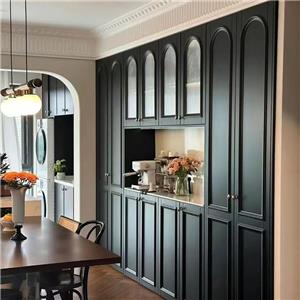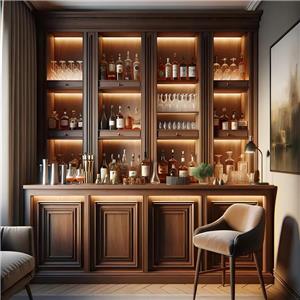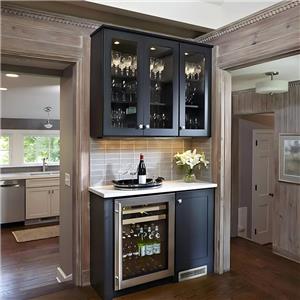How Many Styles are there in Kitchen Cabinets? ——21 Styles of Cabinets
Kitchen cabinets are an indispensable and important part of modern kitchens. Their design and layout directly affect the functionality and aesthetics of the kitchen. With the improvement of people's quality of life and personalized needs, the styles of kitchen cabinets are becoming more and more diverse.
So, how many styles are there in kitchen cabinets? This article will introduce you to the styles of various kitchen cabinets in detail from multiple aspects such as cabinet installation, layout, material and design.
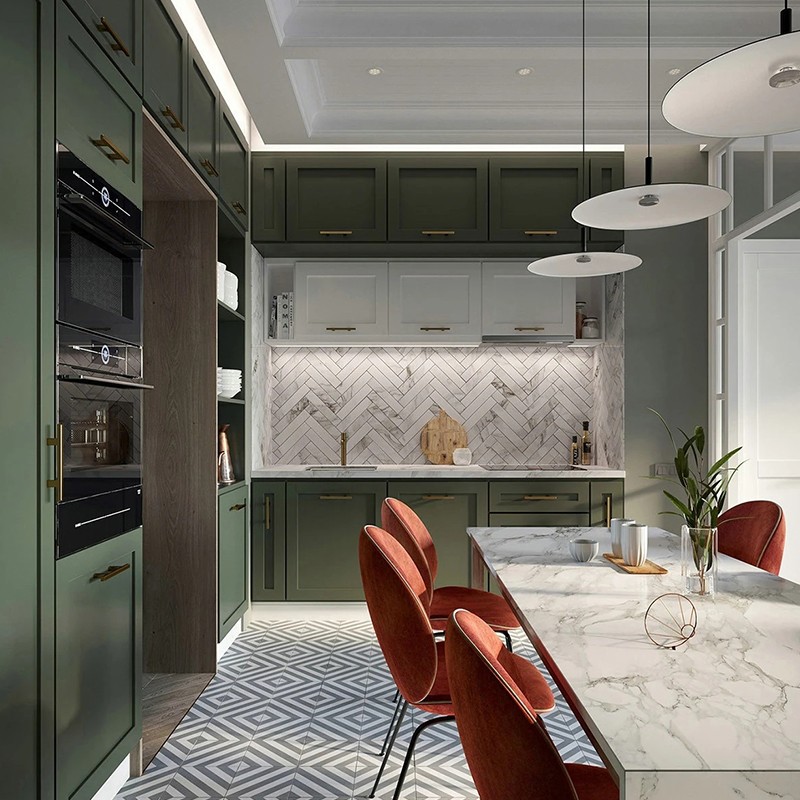
How Many Styles are there in Kitchen Cabinets?
21 Styles of Kitchen Cabinets:
● Classification by installation method
1. Built-in cabinets
2. Freestanding cabinets
3. Semi-built-in cabinets,
● Classification by layout form
1. One-line cabinets
2. L-shaped cabinets
3. U-shaped cabinets
4. Island cabinets
5. Peninsula cabinets,
● Classification by material
1. Solid wood cabinets
2. Artificial board cabinets
3. Stainless steel cabinets
4. Composite material cabinets,
● Classification by functional design
1. Storage cabinets
2. Multifunctional cabinets
3. Display cabinets,
● Classification by door panel style
1. Flat door cabinets
2. Shaped door cabinets
3. Glass door cabinets,
● Classification by color
1. Monochrome cabinets
2. Multicolor cabinets
3. Wood grain cabinets.
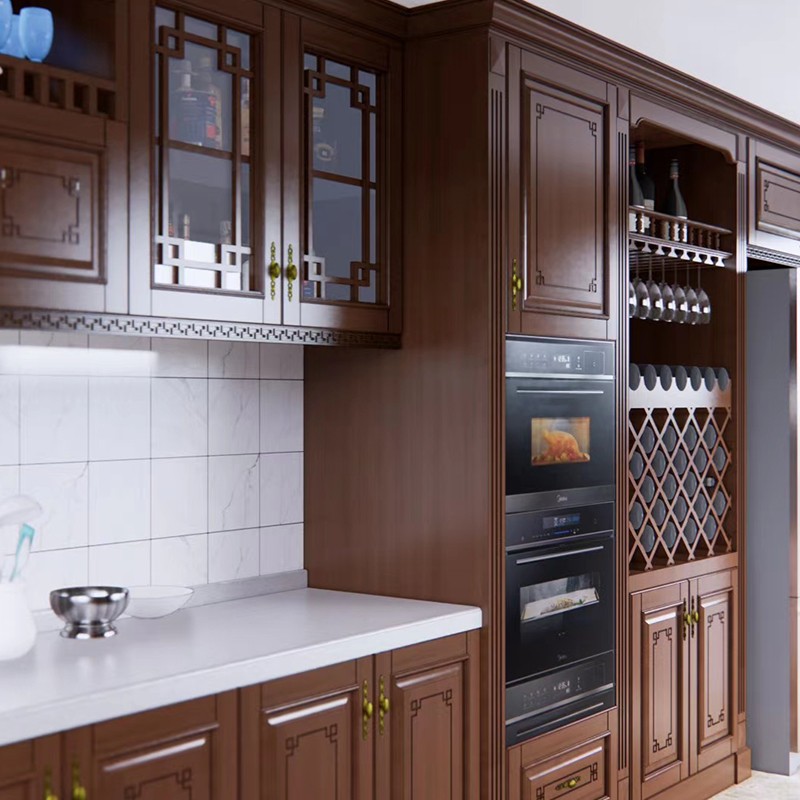
Classification by installation method
1. Built-in cabinets:
Built-in cabinets are cabinets embedded in the wall or other furniture, integrated with the overall design of the kitchen. This type of cabinet is usually highly customized, which can maximize the use of space and is suitable for small kitchens or families that need a unified style. The advantage of built-in cabinets is that they are beautiful and neat, but the disadvantage is that they are complicated to install and require professional design and construction.
2. Freestanding cabinets:
Freestanding cabinets refer to cabinets that are not attached to walls or other furniture and are self-contained. This type of cabinet is easy to install and has high flexibility. It can be moved and adjusted as needed. Freestanding cabinets are suitable for large kitchens or renters. The disadvantage is that they may take up more floor space.
3. Semi-embedded cabinets:
Semi-embedded cabinets are between embedded and freestanding. One part of the cabinet is embedded in the wall or furniture, and the other part is independent. This design can not only utilize the wall space, but also maintain a certain degree of independence. It is suitable for kitchen designs that require partial customization.
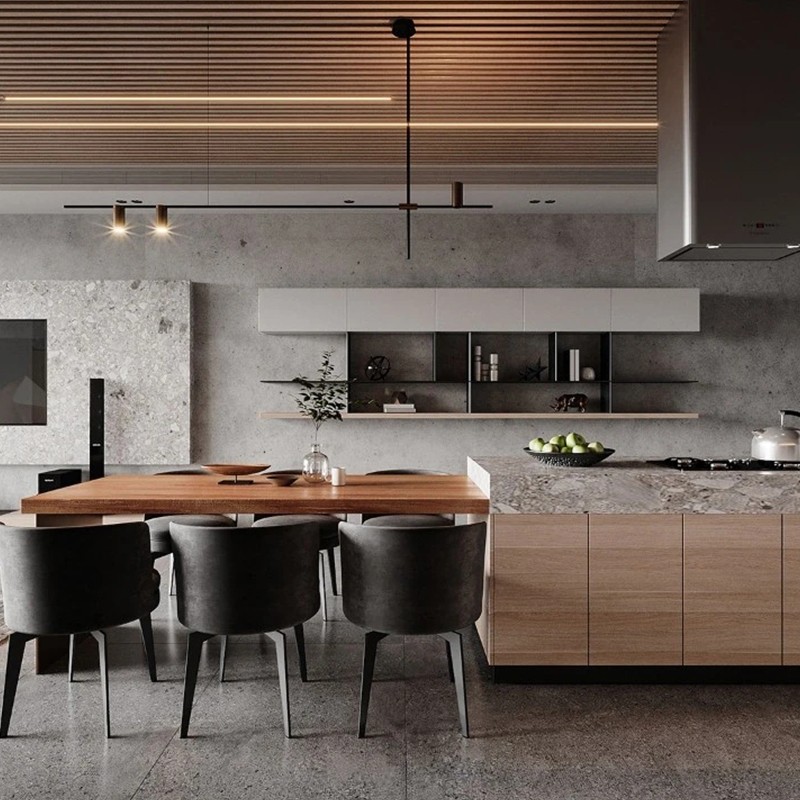
Classification by layout form
1. One-line cabinets:
One-line cabinets are the most common layout form. All cabinets and appliances are arranged along one wall to form a straight line. This layout is suitable for narrow and long kitchens or small apartments. The advantage is that it saves space, but the disadvantage is that the work surface is small and the storage space is limited.
2. L-shaped cabinets:
L-shaped cabinets use two connected walls to form an L-shaped layout. This design increases the worktop and storage space, facilitating flow and operation in the kitchen. L-shaped cabinets are suitable for small and medium-sized kitchens and are a practical and beautiful layout.
3. U-shaped cabinets:
U-shaped cabinets use three walls to form a U-shaped layout. U-shaped cabinets provide ample worktops and storage space, suitable for large kitchens or families that need to cook frequently. Its advantage is that it can form an independent work area, but its disadvantage is that it takes up more space and is not suitable for small kitchens.
4. Island cabinets:
Island cabinets have an independent worktop or storage cabinet in the center of the kitchen to form an island-like layout. This design increases the functionality and operation space of the kitchen and is suitable for large kitchens or open kitchens. The advantage of island cabinets is that they can increase storage and operation areas, but the disadvantage is that they require a larger space and a higher budget.
5. Peninsula cabinets:
Peninsula cabinets are similar to island cabinets, but their island part is connected to other cabinets to form a semi-open layout. This design is suitable for medium-sized kitchens, which not only increases the worktop and storage space, but also does not take up too much floor space.
Classification by material
1. Solid wood cabinets:
Solid wood cabinets are known for their natural texture and high grade. Commonly used woods include oak, cherry, walnut, etc. Solid wood cabinets are sturdy and durable, with natural beauty, but they are expensive and require regular maintenance.
2. Artificial board cabinets:
Artificial board cabinets include medium density fiberboard (MDF), particle board and multilayer board, etc., with high cost performance. Artificial board cabinets have uniform texture and are not easy to deform, which is suitable for modern minimalist kitchen design. Its disadvantage is that its durability and texture are not as good as solid wood cabinets.
3. Stainless steel cabinets:
Stainless steel cabinets are durable, easy to clean, and have the beauty of modern industrial style. Its surface is smooth, not easy to be affected by moisture and deformation, and is suitable for modern minimalist and industrial style kitchens. The disadvantage of stainless steel cabinets is that the color and texture are relatively single and scratches are easy to appear.
4. Composite material cabinets:
Composite material cabinets combine the advantages of multiple materials, such as PVC, acrylic, etc., suitable for families with different budgets. Composite material cabinets have a variety of color and texture options, good durability, but may not be as environmentally friendly as solid wood cabinets.
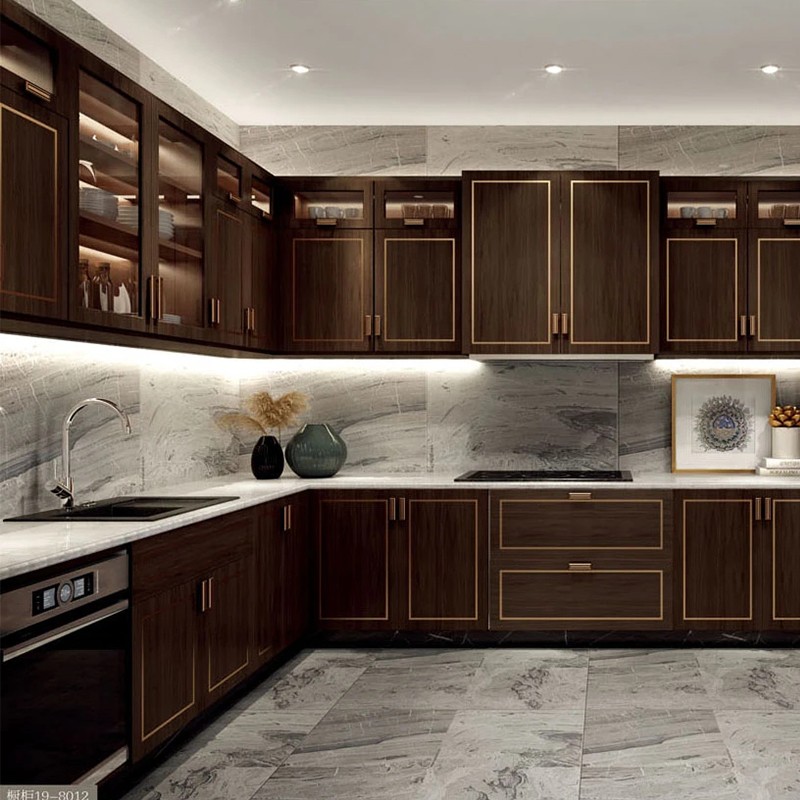
Classification by functional design
1. Storage cabinets:
Storage cabinets focus on storage functions and are designed with a large number of cabinets, drawers and shelves to facilitate the storage of various kitchen supplies and ingredients. This type of cabinet is suitable for families that need a lot of storage space to ensure the cleanliness and orderliness of the kitchen.
2. Multifunctional cabinets:
Multifunctional cabinets integrate multiple functions, such as built-in appliances, garbage disposals, hidden pull-out baskets, etc., which improve the overall functionality and convenience of the kitchen. Multifunctional cabinets are suitable for families that pursue efficiency and intelligence.
3. Display cabinets:
Display cabinets are designed with glass doors, open shelves, etc., which are convenient for displaying kitchen supplies and decorations, and increase the beauty of the kitchen. This type of cabinet is suitable for families who like to display and decorate, and improves the visual effect of the kitchen.
Classification by door panel style
1. Flat door cabinets:
The surface of the door panel of the flat door cabinet is smooth and flat, without any decoration or carving, which is suitable for modern minimalist style kitchen design. The advantages of flat door cabinets are easy cleaning and simple and elegant appearance.
2. Modeling door cabinets:
The door panels of modeling door cabinets have certain decorations and carvings, such as European carvings, American frames, etc., which are suitable for classic and traditional style kitchen designs. The advantage of modeling door cabinets is that they are highly decorative and enhance the grade and beauty of the kitchen.
3. Glass door cabinets:
The door panels of glass door cabinets are partially or entirely made of glass, with a transparent or translucent design, which is convenient for displaying internal items. Glass door cabinets are suitable for modern minimalist and industrial style kitchens, increasing the transparency and beauty of the kitchen.
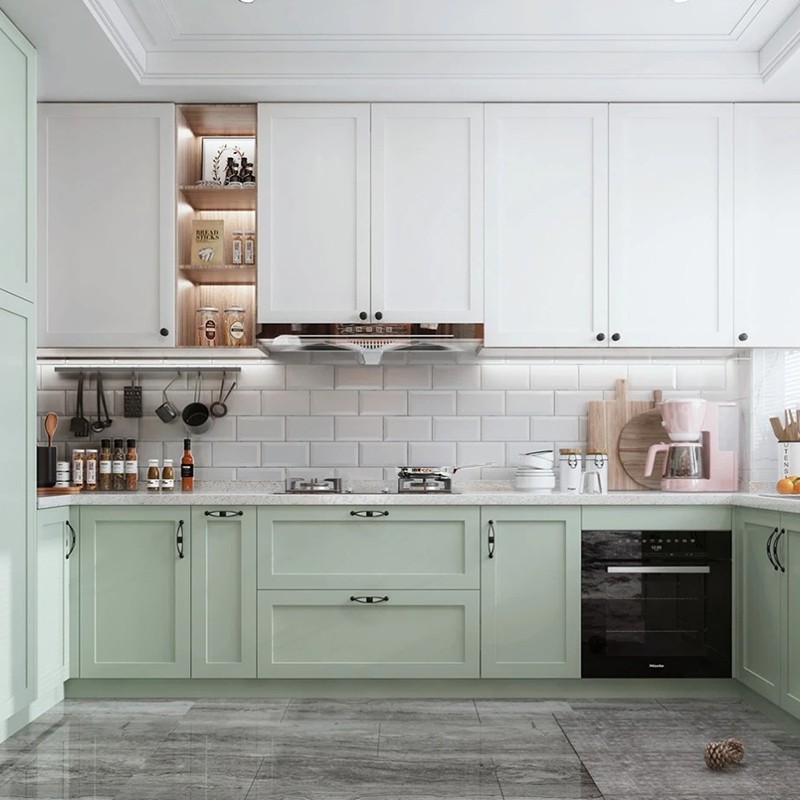
Classification by color
1. Monochrome cabinets:
Monochrome cabinets use a single color, such as white, black, gray, etc., which are suitable for modern minimalist style kitchen designs. The advantage of monochrome cabinets is that the color tone is unified and the visual effect is simple and generous.
2. Multicolor cabinets:
Multicolor cabinets use a combination of two or more colors, such as different colors for the upper and lower cabinets, and different colors for the cabinet and the worktop. This design increases the color level and vitality of the kitchen, and is suitable for families pursuing individuality and diversity.
3. Wood grain cabinets:
Wood grain cabinets use natural wood grain or imitation wood grain design, retaining the natural texture and texture of wood, suitable for classic and natural style kitchen design. The advantage of wood grain cabinets is that the texture is natural and enhances the warmth of the kitchen.
Conclusion of kitchen cabinet styles
Kitchen cabinets come in a variety of styles, from installation methods, layout forms, materials, functional designs, door panel styles to colors, each style can meet the needs and aesthetic preferences of different families. Choosing a kitchen cabinet style that suits you can not only improve the functionality and beauty of the kitchen, but also bring more convenience and fun to family life.
When purchasing kitchen cabinets, consumers should comprehensively consider the kitchen space, usage habits, decoration style and budget to ensure that they choose the most suitable products for themselves.


